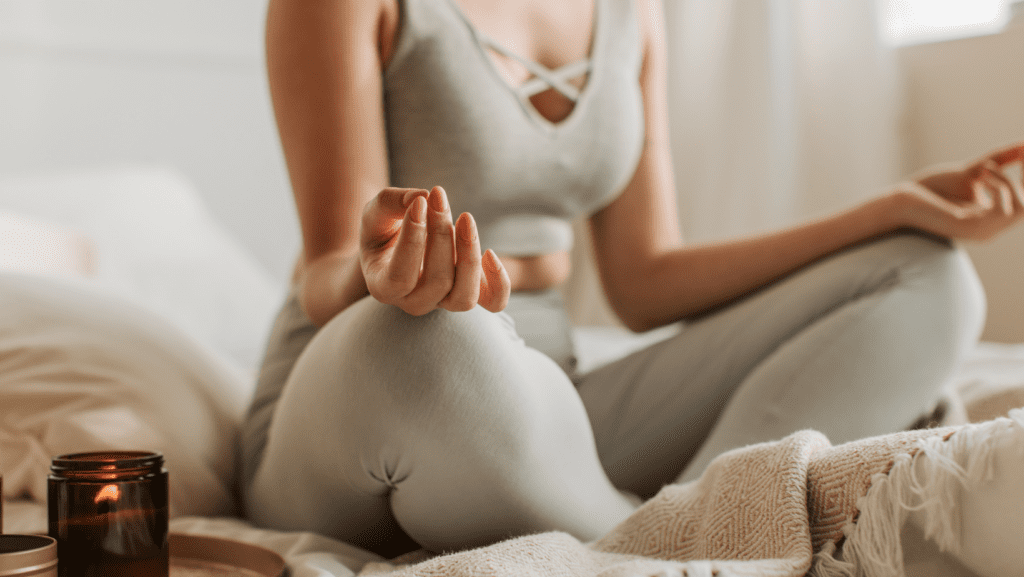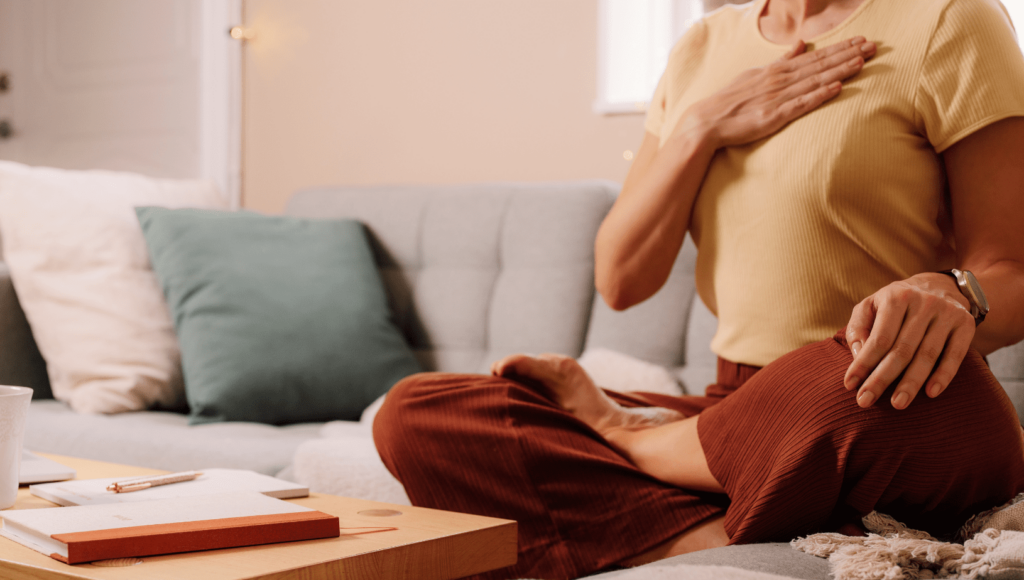In a world that constantly demands our attention, it’s easy to feel overwhelmed. The pressures of work, personal life, and the constant stream of information can leave us feeling disconnected, anxious, and out of control. If you’ve ever found yourself caught in a cycle of racing thoughts or intense stress, you’re not alone. The good news is that there are simple yet powerful practices that can help you regain control and find a sense of calm. One of the most effective methods for managing stress and anxiety is grounding. But what is grounding, and why has it become a go-to tool for those seeking relief from emotional turmoil? Let’s dive deeper into grounding techniques, explore their numerous benefits, and discover how these practices can help you anchor yourself in moments of overwhelm.
When stress and anxiety take hold, it’s easy to get lost in a spiral of thoughts and emotions. Grounding techniques work by pulling your focus away from those overwhelming feelings and back into the present moment, allowing you to regain a sense of control. These techniques are simple to use and can be done anytime, anywhere—whether you’re at home, at work, or even in a crowded space.
In this article, we’ll explore some of the most effective grounding techniques for reducing anxiety and stress, how they work, and the incredible benefits they offer. If you’ve been searching for practical, easy-to-implement strategies for managing your emotions, grounding could be the game-changer you’ve been looking for.
What is Grounding?
Grounding is a psychological technique that helps individuals reconnect with the present moment, focusing on the physical world around them to break the cycle of overwhelming emotions such as anxiety and stress. The essence of grounding is rooted in mindfulness—using the senses to anchor yourself to the here and now. When we become anxious, our minds can spiral, often drifting into worry about the future or ruminating on the past. Grounding acts as a powerful tool to disrupt these thought patterns by directing attention back to our immediate surroundings, often through sensory engagement.

This process involves focusing on tangible sensations such as sight, sound, touch, and even smell, creating a bridge between the mental and physical world. The goal is to detach from distressing emotions and bring attention to the present moment, thereby fostering a sense of control over the mind and body. Whether you're experiencing a full-blown panic attack or simply managing daily stress, grounding techniques can serve as a gentle yet effective tool to help reduce feelings of overwhelm and regain emotional stability.
At the same time, grounding can be used in various ways, from simple self-soothing practices like deep breathing to more intricate exercises such as body scans or visualization. The beauty of grounding is that it’s adaptable—it can be practiced anywhere, anytime, and requires no special tools or resources. It's a versatile technique that empowers individuals to manage their anxiety and stress, providing immediate relief amid emotional turbulence.
Grounding benefits: Why is it Good for You?
Grounding offers a wide range of benefits, especially if you are struggling with anxiety and stress.
Here’s how it can help:
1. Reduces Anxiety
One of the most immediate benefits of grounding is its ability to calm the mind. By shifting attention from anxious thoughts to the physical environment, grounding interrupts the cycle of worry and fear, helping to restore a sense of control. This makes it an effective technique for managing panic attacks and intense moments of anxiety.
2. Promotes Emotional Regulation
Grounding techniques encourage individuals to center themselves emotionally. This can reduce impulsive reactions and help people respond to stress in a more balanced and measured way. By anchoring oneself in the present, grounding can help prevent emotional overwhelm, allowing for clearer thinking and more rational responses to stressful situations.
3. Improves Focus
Anxiety can often cause mental fog or make it difficult to concentrate. Grounding helps refocus the mind on the here and now, reducing distractions and promoting clarity. By tuning into your senses, you can sharpen your focus and become more present, even in stressful environments.
4. Decreases Physical Symptoms of Stress
Anxiety often manifests physically through symptoms such as a racing heart, shallow breathing, or tight muscles. Grounding techniques like deep breathing or progressive muscle relaxation can calm the body’s physical response to stress, helping to regulate heart rate, reduce muscle tension, and restore normal breathing patterns. This can lead to an overall sense of relaxation and relief from the physical manifestations of anxiety.
5. Enhances Mind-Body Connection
Grounding encourages a deeper connection between the mind and body. By focusing on bodily sensations, individuals can better tune into their emotions and recognize early signs of stress or anxiety. This awareness allows for more proactive management of these feelings, as you become attuned to the subtle cues your body gives you when you're feeling anxious or overwhelmed.
6. Increases Self-Awareness
Regular grounding practice can lead to greater self-awareness. By learning to identify your triggers and practicing grounding techniques when needed, you can develop a stronger sense of emotional intelligence. Over time, this practice enhances your ability to recognize and regulate your emotions, reducing the frequency and intensity of stress and anxiety.
7. Fosters Relaxation
Many grounding techniques, such as visualization or mindful breathing, induce a state of relaxation, helping to counteract the physical effects of stress. As relaxation sets in, the body shifts from a “fight or flight” response to a more calm, restorative state, aiding in overall well-being.
In essence, grounding offers both immediate and long-term benefits for managing anxiety and stress. Whether used in moments of acute distress or as part of an ongoing self-care routine, grounding techniques empower individuals to stay centered, calm and focused amidst life’s challenges. But how can you incorporate grounding into your daily routine to effectively manage stress and anxiety? Here are ten grounding techniques that can help you regain balance and control whenever you need it most.
10 powerful grounding techniques for immediate relief
When stress and anxiety take over, it can be hard to focus on anything other than the overwhelming feelings. Fortunately, there are several grounding techniques you can use to regain control and center yourself. These methods engage your senses and help you reconnect with the present moment, offering immediate relief from the physical and mental symptoms of stress.

Here are 10 powerful grounding techniques to help you regain your calm in any situation.
1. 5-4-3-2-1 Technique
The 5-4-3-2-1 technique engages all five senses to help bring your focus back to the present moment. It’s a powerful way to distract your mind from overwhelming thoughts by tuning into your surroundings. Start by identifying five things you can see around you, then four things you can feel, followed by three things you can hear. After that, focus on two things you can smell, and finally, one thing you can taste. This process helps reconnect your mind to the physical environment, grounding you in the moment.
2. Deep Breathing (Box Breathing)
Box breathing is a calming breathing technique that helps reduce physical symptoms of anxiety, such as a racing heart. Begin by inhaling deeply through your nose for a count of four seconds, hold your breath for four seconds, and then exhale slowly through your mouth for another four seconds. Hold the exhaled breath for four seconds before repeating. This rhythmic breathing slows your heart rate and promotes relaxation.
3. Body Scan Meditation
A body scan is a mindfulness practice where you focus on the physical sensations throughout your body. Start by finding a quiet and comfortable place to sit or lie down, and begin by bringing attention to your feet. Slowly move your awareness up to your legs, torso, arms, neck, and head. As you move through each body part, notice any sensations—whether it’s warmth, coolness, tension, or relaxation. If you encounter tension, breathe into that area and consciously release it. A body scan helps you connect with your body and encourages relaxation.
4. Progressive Muscle Relaxation (PMR)
Progressive Muscle Relaxation involves systematically tensing and relaxing muscle groups to release physical tension. Starting from your feet, tense each muscle group for 5-10 seconds and then relax it suddenly. Continue this with your calves, thighs, abdomen, chest, arms, neck, and face. Pay attention to the feeling of relaxation that follows the release of tension. This exercise can help calm the body and reduce anxiety.
5. Visualization (Safe Place Technique)
Visualization is a powerful technique that helps you mentally escape from stress. To practice, close your eyes and picture a place where you feel completely safe and at peace, such as a beach, forest, or quiet room. Engage your senses by imagining the details—what you see, hear, smell, and feel. The more vividly you can imagine this place, the more effective the technique will be in reducing anxiety.
6. Mindful Walking
Mindful walking is a simple but effective way to ground yourself. Focus on the rhythm of your steps, and notice the sensations as your feet connect with the ground. If you're outside, pay attention to the sights, sounds, and smells around you. Walking slowly and mindfully helps bring your awareness to the present moment, away from anxious thoughts. It’s a great technique to use when you're feeling overwhelmed.
7. Touching an Object
Touching or holding an object with a strong texture can help bring you back to the present moment. Choose an object like a stone, fabric, or stress ball. Focus on how it feels in your hand—the weight, texture, and temperature. Manipulating the object can help distract you from negative thoughts and provide a grounding sensation when you're feeling anxious.
8. Scent-Based Grounding (Aromatherapy)
Scent can have a powerful effect on your mood. Using calming scents like lavender, chamomile, or sandalwood can help you center your mind. Take a deep breath, focusing on the aroma of an essential oil or a scented candle. Notice how the scent affects your emotions and lets it calm your nervous system. Keep a small bottle of essential oil nearby to use when needed.
9. Counting or Repeating a Mantra
Counting or repeating a mantra can help ground you when your mind feels scattered. Choose a calming number or phrase, such as "I am safe" or "One step at a time." As you breathe, silently repeat the number or mantra to yourself. This repetition helps anchor your mind and encourages relaxation, allowing you to focus on the present moment instead of anxious thoughts.
10. Walking Barefoot (Earthing)
Earthing, or walking barefoot on natural surfaces, helps reconnect you to the Earth and reduce anxiety. Find a safe outdoor space like grass, sand, or dirt, and walk barefoot, paying attention to how the ground feels beneath your feet. Direct contact with nature can promote relaxation and a sense of balance, grounding you both physically and mentally.
Grounding and the Root Chakra: Unlocking Stability and Calm
At the same time, grounding is not only a physical practice but also an energetic one, deeply connected to the root chakra. The root chakra, or Muladhara, is the first of the seven main chakras and is located at the base of the spine. It governs our feelings of stability, security, and connection to the physical world. When the root chakra is balanced, we feel grounded, safe, and centered, which can significantly reduce feelings of anxiety and stress. This chakra serves as our foundation, both literally and metaphorically, helping us feel anchored in the present moment.
When we experience stress or anxiety, it often disrupts our connection to the Earth and leads to feelings of instability or fear. This is where grounding techniques become so beneficial. They help us reconnect to our physical surroundings and re-establish a strong sense of security. By incorporating grounding into your routine, you can directly support the health of your root chakra, fostering a sense of emotional and mental stability. Techniques like walking barefoot on natural surfaces (earthing), sitting with your feet flat on the ground, or even visualizing roots extending from your body into the Earth can all enhance the root chakra’s energy. As this chakra becomes more balanced, your ability to manage stress, anxiety, and overwhelming emotions improves, helping you maintain a calm and centered state even during challenging times.
Incorporating Grounding into Your Daily Life
As you explore grounding techniques to manage anxiety and stress and improve your overall well-being, you may find that additional support can deepen your journey toward balance and calm. Whether you're looking to enhance your grounding practices, gain insights into your energy, or release emotional blocks, Aloee Wellness’s online healing services are designed to complement and elevate your healing journey.
Want to know more? Book a free consultation today and start your transformation!


